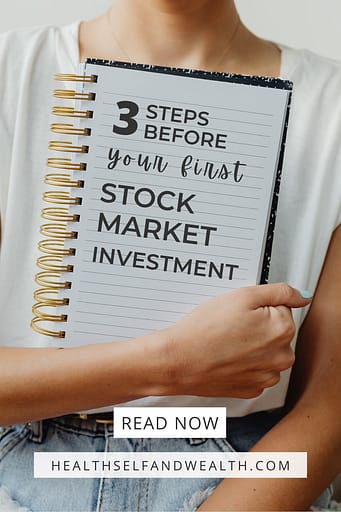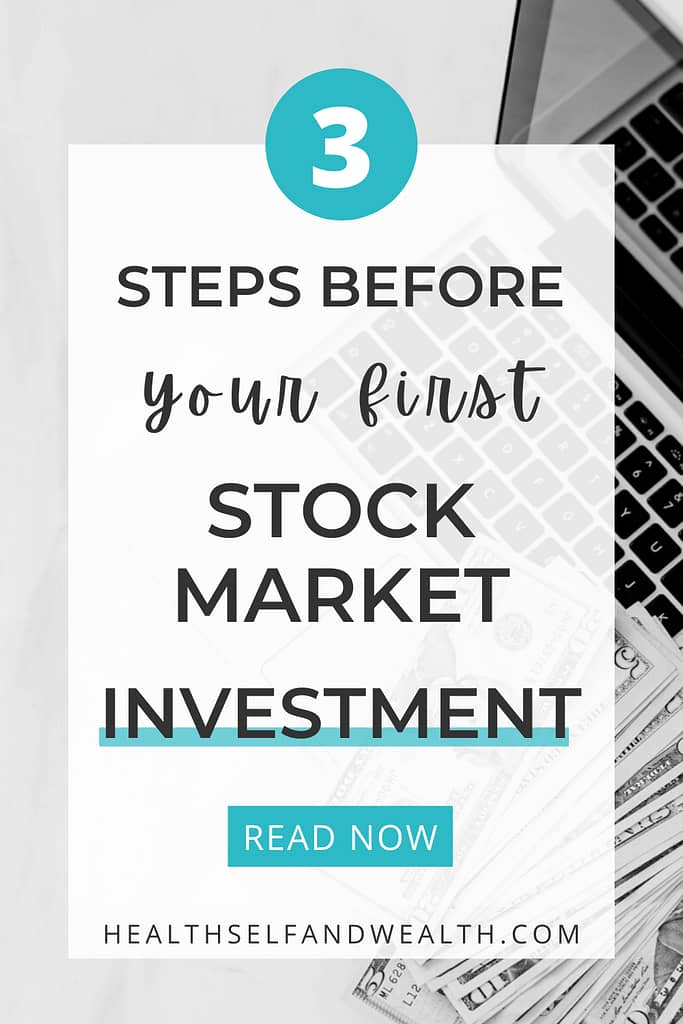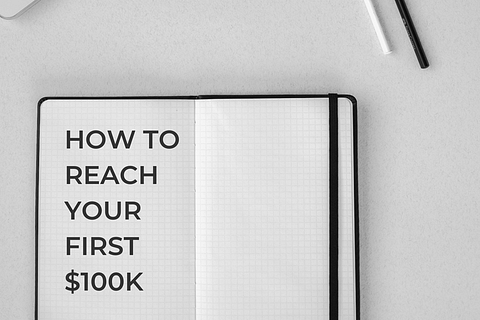
If you’re new to investing, all the information out there may be overwhelming. This can make it challenging to determine what action you should take next. Instead, wouldn’t it be nice to know what you really need to focus on before making your first stock market investment? Here are the first 3 steps to take before making your first stock market investment.
Here are 3 steps to take before you start investing to set yourself up for success.
Please note: I am not a licensed financial advisor. This is for educational purposes only and is NOT advice. Always do your own research and due diligence before making any decision.
Build an emergency fund
An emergency fund is a savings account with a balance that covers at least 3-6 months of expenses.
If you already have an emergency fund – woohoo! That’s great.
However, if you invest without emergency savings, you may find yourself in a bad situation. If an emergency happens, you will likely have limited financial options. You may have to borrow with high-interest debt or withdraw from your investments.
While withdrawing from your investments may not sound that bad, it depends on a couple of factors.
You may face early withdrawal penalties, depending on your account type and how long you’ve held your investments.
On top of that, you don’t know if the market will be up or down when you need the money.
The guaranteed way to lose money in the stock market is to sell an asset for less than you paid.
If the market is up and you decide to sell, you may pay taxes on your profit, depending on your account type.
If you’ve held that investment for less than a year, you will pay more taxes on it than if you’ve held it for more than a year.
To learn about the pros and cons of different investment accounts, read more here.
To summarize, an emergency fund helps you avoid withdrawing from investments and accumulating high-interest debt. Emergency savings prevent you from making less optimal financial decisions. That’s why you need an emergency fund before making your first stock market investment.
Learn more about why an emergency fund is the smartest money move here.
Eliminate high-interest debt
If you’re interested in investing, it’s likely you understand the power of compound returns. For those unfamiliar with the concept of compounding, let’s see an example:
| Time (years) | 40 |
| Annual Average Rate of Return | 7% |
| Annual Contribution | $6,000 |
| Future Value | $1,197,811 |

Now if you’re an investor, you love compound interest and it’s a huge part of the reason why you should make your first stock market investment! However, if you have high-interest debt, compound interest works against you. Instead of compounding returns, you have compounding debt.
That’s why you should eliminate high-interest debt before you begin investing. As a general rule, high-interest debt is 7%+. That’s because the stock market has an average annual return of 7%.
Conversely, if your debt is lower than 7%, you may get ahead by investing instead of paying off your debt faster.
Define your financial goals
Once you get into investing, it can be easy to get caught up in the hype. However, remember investing is a long-term game. It requires mental strength to ignore the noise and stick to your strategy.
You can set yourself up for success by clearly defining your investing goals and strategy before you begin. This will help you stay on track with your plan and equip you to reach your goals.
Ensure your goals are realistic, specific, quantified, and time-bound.
Here’s an example:
Goal: I will earn an investment value of $1 million+ in 20 years.
Strategy: I will invest $2,000 per month. More specifically, I will buy and hold diversified index funds in tax-advantaged investment accounts.
A note about investing strategies: Research shows buy and hold strategies tend to perform best over the long term. Many of the best investors are dead, which supports holding investments long term.
Take a moment to define your goals and select a strategy that aligns with your goals.
Next investing steps
Once you have these 3 steps complete, you are ready to make your first stock market investment. From here, choose a system to track your investments so you can ensure you are on track to reach your goals.
The google sheets Personal Finance Planner is designed to help investors reach their goals. You can download yours here.
Thank yourself for taking the time to prepare for your first stock market investment.
If you want more investing tips, subscribe for weekly insights in your inbox.








